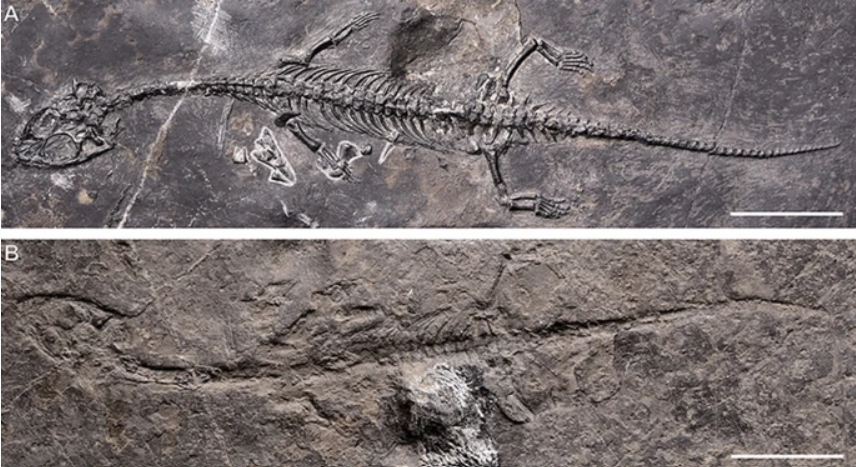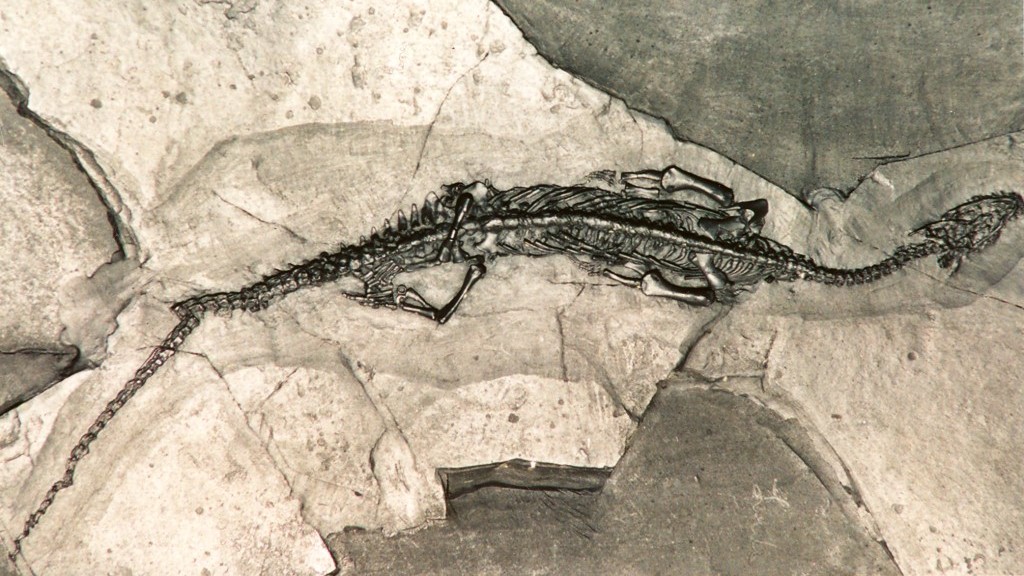Paleontologists have found a new species of pachypleurosaur.
Others are reading now
Paleontologists have identified a new species of pachypleurosaur, a type of primitive marine reptile, from the Middle Triassic period in southwestern China. Named Dianmeisaurus mutaensis, this ancient creature lived approximately 245 million years ago during the Anisian age.
Pachypleurosaurs were small aquatic reptiles resembling lizards, with distinct features like long necks, paddle-shaped limbs, and deep, elongated tails. These creatures are part of the Sauropterygia, a diverse group of Mesozoic marine reptiles that includes the famous plesiosaurs from the Jurassic and Cretaceous periods.
Dr. Jun Liu and his team from Hefei University of Technology explained, “Sauropterygia, especially the Eosauropterygia clade, showcases remarkable species diversity, encompassing groups like Pachypleurosauria, Nothosauroidea, and Pistosauroidea.”
Also read

The fossil of Dianmeisaurus mutaensis was discovered in an abandoned quarry near Muta village in Yunnan province. Remarkably well-preserved, the skeleton measures just 99.2 mm (4 inches) in length, indicating it was likely an immature specimen. Found embedded in dark-gray limestone, the fossil was carefully extracted and prepared using pneumatic tools and needles.
“This new species exhibits several unique traits, including specific structural differences in its ribs and vertebrae, such as two sacral vertebrae and a stout last dorsal rib shorter than the first sacral rib,” the researchers noted.
Phylogenetic analysis places Dianmeisaurus mutaensis as closely related to Dianmeisaurus gracilis, another pachypleurosaur species from the Middle Triassic Luoping biota. However, the analysis also challenges traditional views of pachypleurosaur evolution, suggesting new interrelationships among eosauropterygians.
“Our findings support the eastern Tethys as the origin of pachypleurosaurs,” the team stated. “However, additional early Anisian fossils from this region are needed to fully test this biogeographic hypothesis.”
The discovery and analysis were published in the Swiss Journal of Palaeontology.


